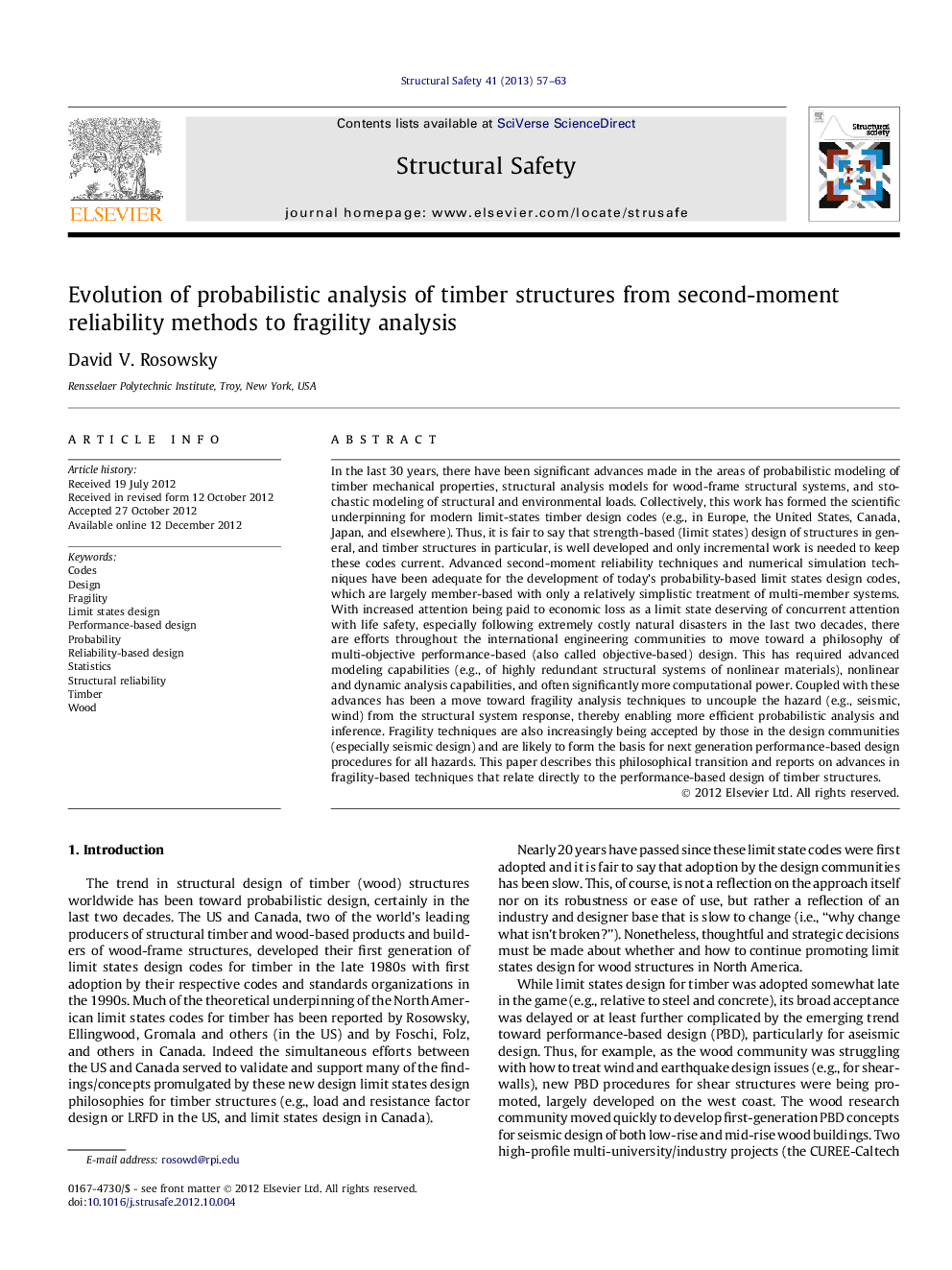| کد مقاله | کد نشریه | سال انتشار | مقاله انگلیسی | نسخه تمام متن |
|---|---|---|---|---|
| 307568 | 513377 | 2013 | 7 صفحه PDF | دانلود رایگان |

In the last 30 years, there have been significant advances made in the areas of probabilistic modeling of timber mechanical properties, structural analysis models for wood-frame structural systems, and stochastic modeling of structural and environmental loads. Collectively, this work has formed the scientific underpinning for modern limit-states timber design codes (e.g., in Europe, the United States, Canada, Japan, and elsewhere). Thus, it is fair to say that strength-based (limit states) design of structures in general, and timber structures in particular, is well developed and only incremental work is needed to keep these codes current. Advanced second-moment reliability techniques and numerical simulation techniques have been adequate for the development of today's probability-based limit states design codes, which are largely member-based with only a relatively simplistic treatment of multi-member systems. With increased attention being paid to economic loss as a limit state deserving of concurrent attention with life safety, especially following extremely costly natural disasters in the last two decades, there are efforts throughout the international engineering communities to move toward a philosophy of multi-objective performance-based (also called objective-based) design. This has required advanced modeling capabilities (e.g., of highly redundant structural systems of nonlinear materials), nonlinear and dynamic analysis capabilities, and often significantly more computational power. Coupled with these advances has been a move toward fragility analysis techniques to uncouple the hazard (e.g., seismic, wind) from the structural system response, thereby enabling more efficient probabilistic analysis and inference. Fragility techniques are also increasingly being accepted by those in the design communities (especially seismic design) and are likely to form the basis for next generation performance-based design procedures for all hazards. This paper describes this philosophical transition and reports on advances in fragility-based techniques that relate directly to the performance-based design of timber structures.
▸ Probabilistic concepts underlying limit states design and emerging PBD concepts for wood structures are presented. ▸ Philosophical transitions between strength (limit state) and performance-based design for timber structures are described. ▸ Remaining challenges are identified prior to widespread adoption of next-generation probabilistic design procedures for timber.
Journal: Structural Safety - Volume 41, March 2013, Pages 57–63